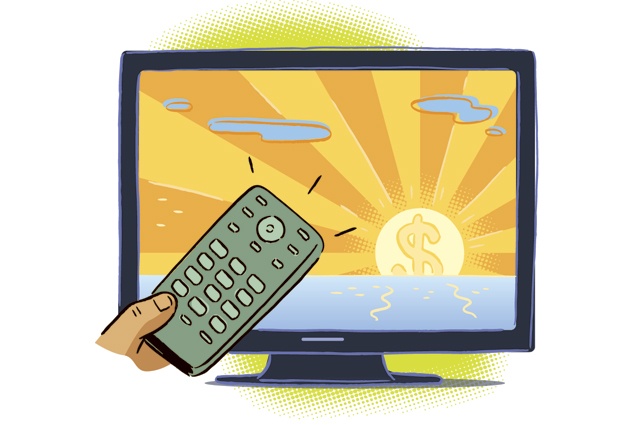The days of large console televisions, with their wood-grain exteriors and antenna wires or rabbit ears, are being tuned out. Today’s televisions offer larger, thinner screens and, thanks to digital cable or satellite connections, provide a virtually unlimited number of channels.
However, some models require a tremendous amount of energy to operate—almost as much as a refrigerator. And the average American household owns 2.93 TVs, according to a 2010 Nielsen report.
In 2004, The Natural Resources Defense Council found that U.S. televisions use more than 46 billion kilowatt-hours per year, or about 4 percent of residential electricity use.
In response to consumer concerns, TV manufacturers are designing sets that use less energy without sacrificing screen size or resolution.
If you’re in the market for a new TV, or if you want to make sure you’re using your current TV efficiently, these tips will help you tune in to big-screen energy savings.
High-definition sets generally use more power because of better picture clarity.
Four main types of TVs are now available: plasma, liquid-crystal display (LCD), rear projection and cathode-ray tube (CRT). CRT televisions are the most difficult to find because they employ old technology, and screen sizes rarely top 40 inches.
Plasma screens often are cited as the largest energy user, mainly because their large 42- to 65-inch screens typically draw between 240 and 400 watts. Most consume electricity even when turned off.
LCD TVs don’t need much power to operate, about 111 watts on average.
There are two types of LCD TVs: those with cold-cathode fluorescent lamps to illuminate the screen, and backlit models employing a light-emitting diode (LED). LED units offer several benefits, notably better picture quality and thinner and lighter screens. They also use slightly less energy, at 101 watts.
Rear-projection televisions tend to be the most energy efficient and boast the largest screen sizes.
Shopping for an energy-efficient television can be difficult. Television manufacturers rarely advertise energy consumption, and it almost never appears on in-store labels, though new Energy Star requirements might change that in 2012.
Faced with these difficulties, consumers need to conduct their own energy-use research through unbiased online sources such as www.cnet.com, an online journal for the technology industry.
Look for specific model numbers, which you can take to the store.
——————–
Brian Sloboda is a program manager specializing in energy efficiency for the Cooperative Research Network, a service of the National Rural Electric Cooperative Association (NRECA). Magen Howard, assistant editor for the NRECA’s Straight Talk, contributed to this article.


